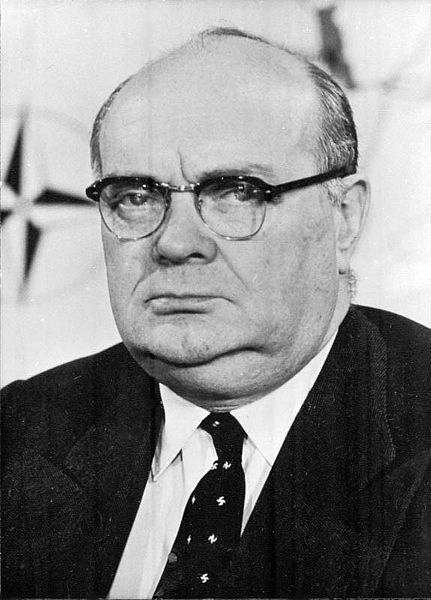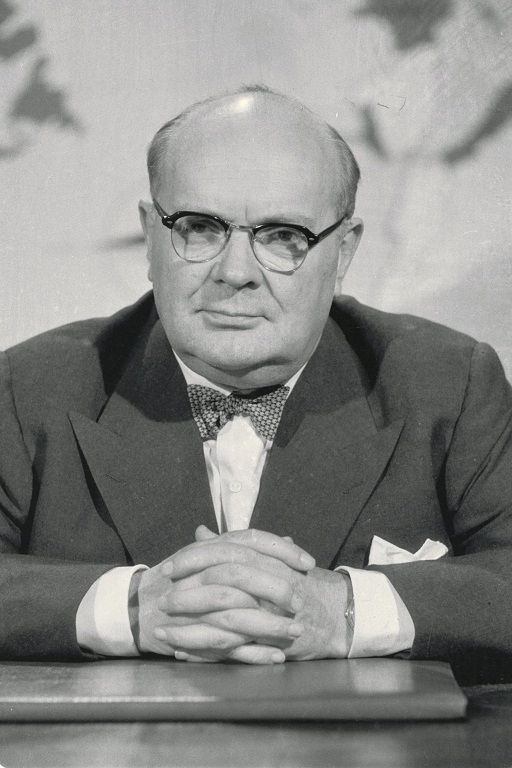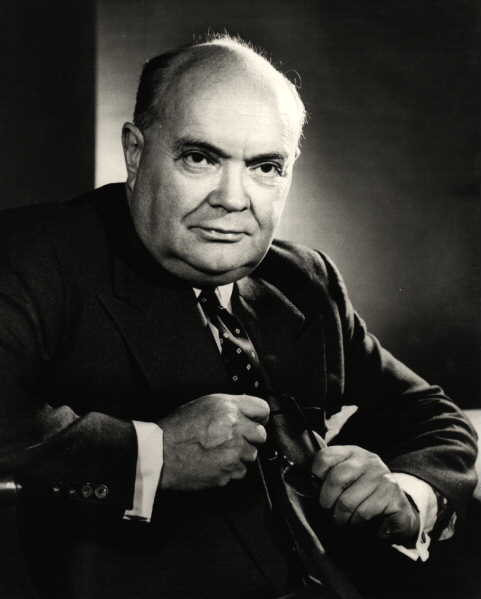<Back to Index>
- Surgeon James Marion Sims, 1813
- Writer Aadne Eivindsson Garborg (Arne Garborg), 1851
- Prime Minister of Belgium Paul Henri Charles Spaak, 1899
PAGE SPONSOR



Paul Henri Charles Spaak (25 January 1899 - 31 July 1972) was a Belgian Socialist politician and statesman.
Paul-Henri Spaak was born on 25 January 1899 in Schaerbeek, Belgium, to a distinguished Belgian family. His grandfather, Paul Janson was an important member of the Liberal Party. His mother, Marie Janson was a socialist, and the first woman to enter the Belgian Senate, and his father, Paul Spaak was a poet and playwright. Another noted members of his family included Paul Henri's uncle Paul - Emile Janson who served as Prime Minister of Belgium from 1937 to 1938 and his niece, Catherine Spaak, a movie star.
During World War I, Spaak attempted to join the Belgian Army, but was captured by the Germans, and spent the next two years in a German prison camp. At the end of the war, Spaak was released from captivity and entered the Université Libre de Bruxelles, where he studied law. During the same period, Spaak was also a tennis star, and played for the Belgian team in the 1922 Davis Cup.
After receiving his law degree, Spaak practiced law in Brussels, where he "excelled in defending Communists charged with conspiring against the security of the realm", including Fernando de Rosa, an Italian student who attempted to kill Crown Prince Umberto of Italy during a state visit by the prince to Brussels.
He became a member of the Socialist Belgian Labour Party in 1920. He was elected deputy in 1932.
In 1935 he entered the cabinet of Paul Van Zeeland as Minister of Transport. In February 1936 he became Minister of Foreign Affairs, serving first under Zeeland and then under his uncle, Paul - Émile Janson. From May 1938 to February 1939 he was Prime Minister for the first time.
He was Foreign Minister again from September 1939 until August 1949 under the subsequent Prime Ministers Hubert Pierlot, Achille Van Acker and Camille Huysmans. During this time he twice was appointed Prime Minister as well, first from 13 to 31 March 1946 - the shortest government in Belgian history, and again from March 1947 to August 1949.
He again was foreign minister from April 1954 to June 1958 in the cabinet of Achille Van Acker and from April 1961 to March 1966 in the cabinets of Théo Lefèvre and Pierre Harmel.
Spaak was an advocate of Belgium's "independence policy" before World War II. During the German invasion in May 1940, he fled to France and tried to return during the summer but was prevented by the Germans, even though he was Foreign Minister at the time. Hence, against his wishes he settled in Britain.
Spaak gained international prominence in 1945, when he was elected chairman of the first session of the General Assembly of the United Nations. During the third session of the UN General Assembly in Paris,
Spaak apostrophized the delegation of the Soviet Union with the famous
words: "Messieurs, nous avons peur de vous" (Sirs, we are afraid of
you). Spaak became a staunch supporter of regional co-operation and collective security after 1944. While still in exile in London, he promoted the creation of a customs union uniting Belgium, the Netherlands and Luxembourg (see Benelux). In August 1949, he was elected President of the first session of the Consultative Assembly of the Council of Europe. From 1952 to 1953, he presided the Common Assembly of the European Coal and Steel Community. In 1955, the Messina Conference of European leaders appointed him as chairman of a preparatory committee (Spaak Committee) charged with the preparation of a report on the creation of a common European market. The so-called "Spaak Report " formed the cornerstone of the Intergovernmental Conference on the Common Market and Euratom at Val Duchesse in 1956 and led to the signature, on 25 March 1957, of the Treaties of Rome establishing a European Economic Community and the European Atomic Energy Community (Euratom). Paul - Henri Spaak signed the treaty for Belgium, together with Jean Charles Snoy et d'Oppuers. His role in the creation of the EEC earned Spaak a place among the Founding fathers of the European Union. When in 1962 France's President de Gaulle attempted to block both British entry to the European Communities and undermine their supranational foundation with the Fouchet Plan, Spaak working with Joseph Luns of
the Netherlands rebuffed the idea. He was a staunch defender of the
independence of the European Commission. "Europe of tomorrow must be a supranational Europe," he declared. In honour of his work for Europe, the first building of the European Parliament in Brussels was named after him. In 1956, he was chosen by the Council of the North Atlantic Treaty Organisation to succeed Lord Ismay as Secretary General. He held this office from 1957 until 1961, when he was succeeded by Dirk Stikker. Spaak was also instrumental in the choice of Brussels as the new seat of the Alliance's HQ in 1966. This
was also the year of his last European campaign, when he played an
important conciliatory role in resolving the "empty chair crisis" by
helping to bring France back into the European fold. In 1957 he
received the Karlspreis (engl.: Charlemagne Award) an Award by the German city of Aachen to people who contributed to the European idea and European peace. On 21 February 1961, Spaak was presented with the Presidential Medal of Freedom by President John Kennedy.
Paul - Henri
Spaak retired from politics in 1966. He was member of the Royal Belgian
Academy of French Language and Literature. In 1969, he published his
memoirs in two volumes titled Combats inachevés ("The Continuing Battle"; literally, "unfinished fights"). Spaak died aged 73, on 31 July 1972 in his home in Braine - l'Alleud near Brussels, and was buried at the Foriest graveyard in Braine - l'Alleud.
He and his wife Marguerite Malevez had two daughters — Antoinette Spaak led the Democratic Front of Francophones — and a son, the diplomat Fernand Spaak. After her death in August 1964, he married Simone Dear in April 1965. His brother was the screenwriter Charles Spaak. His niece was the actress Catherine Spaak one of his grandsons is the artist Anthony Palliser. During the 1940s, during his time in New York with the United Nations,
he also had an affair with the American fashion designer Pauline Fairfax Potter (1908 – 1976).
Spaak
has left such a legacy behind, that he was the main motive for one of
the most recent and famous gold commemorative coin: the Belgian 3 pioneers of the European unification commemorative coin, minted in 2002. The obverse side shows a portrait with the names Robert Schuman, Paul - Henri Spaak and Konrad Adenauer.